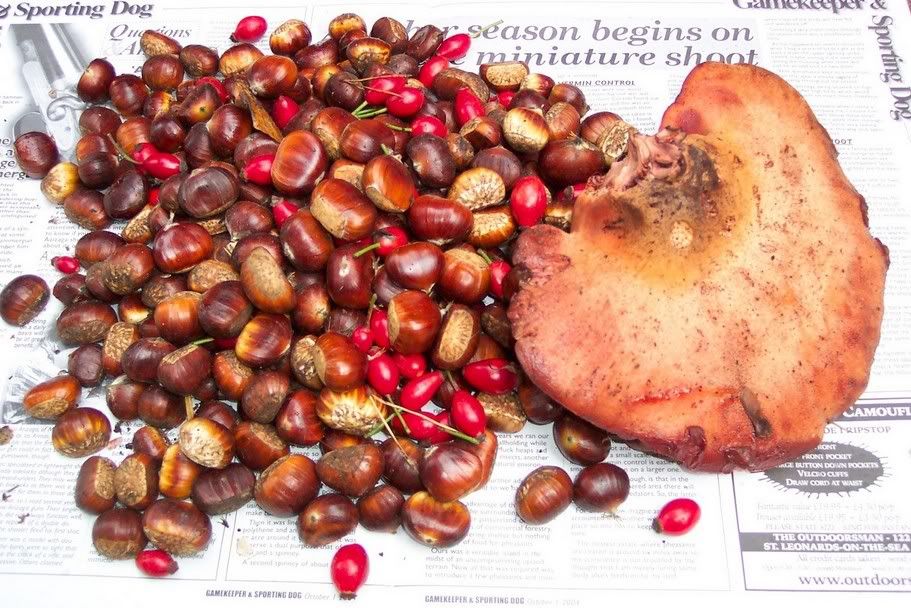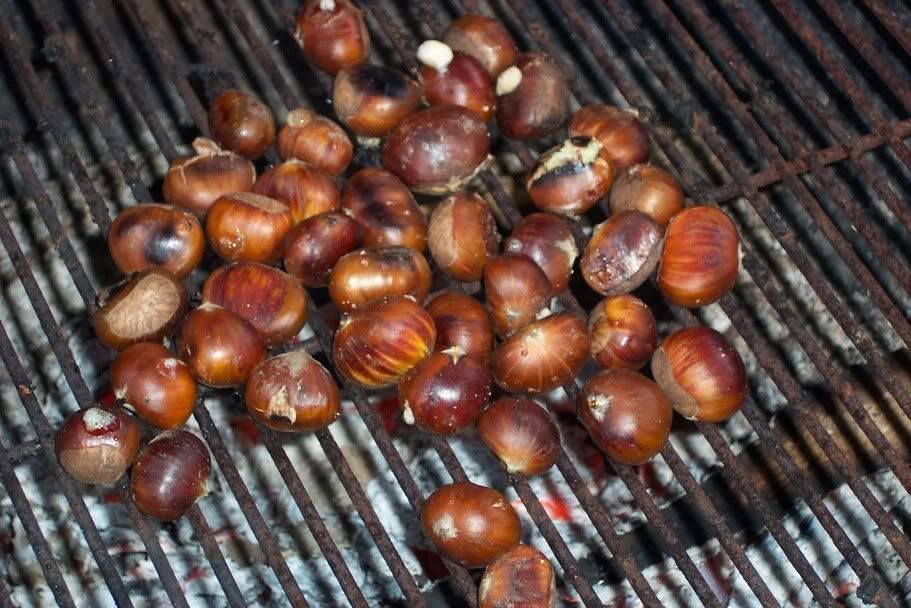Frogo said:
The Sweet chestnut that grows on the continent has a longer ripening period due to the summers being longer, as are not.
Yep. It is the longer, warmer climate which provides the prolonged ripening season. The naturalised tree is the same species though to that which grows in Britain, Castanea sativa. many different varieties are grown commercially.
Horse chestnuts, are starch, what are carbohydrates???
Carbohydrate comes in various forms including glucose, fructose, cellulose and starch , and these exist in all plants. The digestibility of the carbohydrate varies between these forms.
The reason I would say the horse chestnut nuts/ conkers are not 'good' food is because the time and effort required processing them to render them safe (by removing the toxic saponins notably aescin) and it also removes pretty much all the valuable vitamins and minerals at the same time. More detail:
The seed is quite large, about 3cm in diameter, and is easily harvested. It is usually produced in abundance in Britain. Unfortunately the seed is also rich in saponins, these must be removed before it can be used as a food and this process also removes many of the minerals and vitamins, leaving behind mainly starch. See also the notes above on toxicity. The seed contains up to 40% water, 8 - 11% protein and 8 - 26% toxic saponins
source: Duke. J. A. and Ayensu. E. S. Medicinal Plants of China Reference Publications, Inc. 1985
This is also mentioned on the BBC web site:
Conkers, unlike the seeds of the sweet chestnut, are not easily edible, as they contain poisonous saponins, along with aescin, which can cause vomiting and paralysis. They can be rendered safe by crushing and leaching with water, or by slow cooking, but the remaining food is largely starch.
source: BBC - h2g2 - Horse Chestnut Tree
The native American Indians would render them harmless by slow-roasting the nuts and then cutting them into thin slices, putting them into a cloth bag and rinsing them in a stream for 2 - 5 days.
So sure, it could be considered an emergency food source but not one you would look to generally. There are quite a few herbal uses for the plant and as a soap as mentioned above.
Now sweets chestnuts are a different story ;-) There is a very good breakdown of their nutritional value here:
Nutritional Value of (Sweet) Chestnuts Dried chestnuts appear an ideal way to store and carry chestnuts (and as flour although it goes rancid quickly).
You may also consider it's use in an emergency situation to help gather other food source; fish! Plants containing high levels of saponins such as horse chestnut have been (and are still used in some regions of the world notably the Amazon rain forest by indigenous tribes) as fish poisons. They have a much lower tolerance to the chemical than humans hence this use. In fact although fishing using poisons is understandably banned in most countries, I know this method has been used in recent conflicts in former Jugoslavia to feed soldiers and give them a valuable source of protein (another plant was used on that occasion).
Simon
 ), some will go to make HFW's sweet chestnun puree. Any suggestions for the rest?
), some will go to make HFW's sweet chestnun puree. Any suggestions for the rest? ), some will go to make HFW's sweet chestnun puree. Any suggestions for the rest?
), some will go to make HFW's sweet chestnun puree. Any suggestions for the rest?






 In France zillions of hug fat conkers just lie on the ground. My kids just can't resist such treasures, and nor can I
In France zillions of hug fat conkers just lie on the ground. My kids just can't resist such treasures, and nor can I